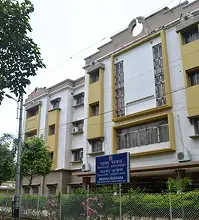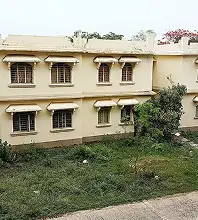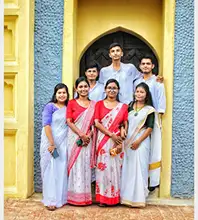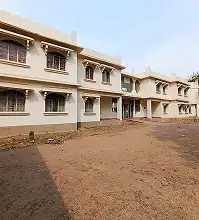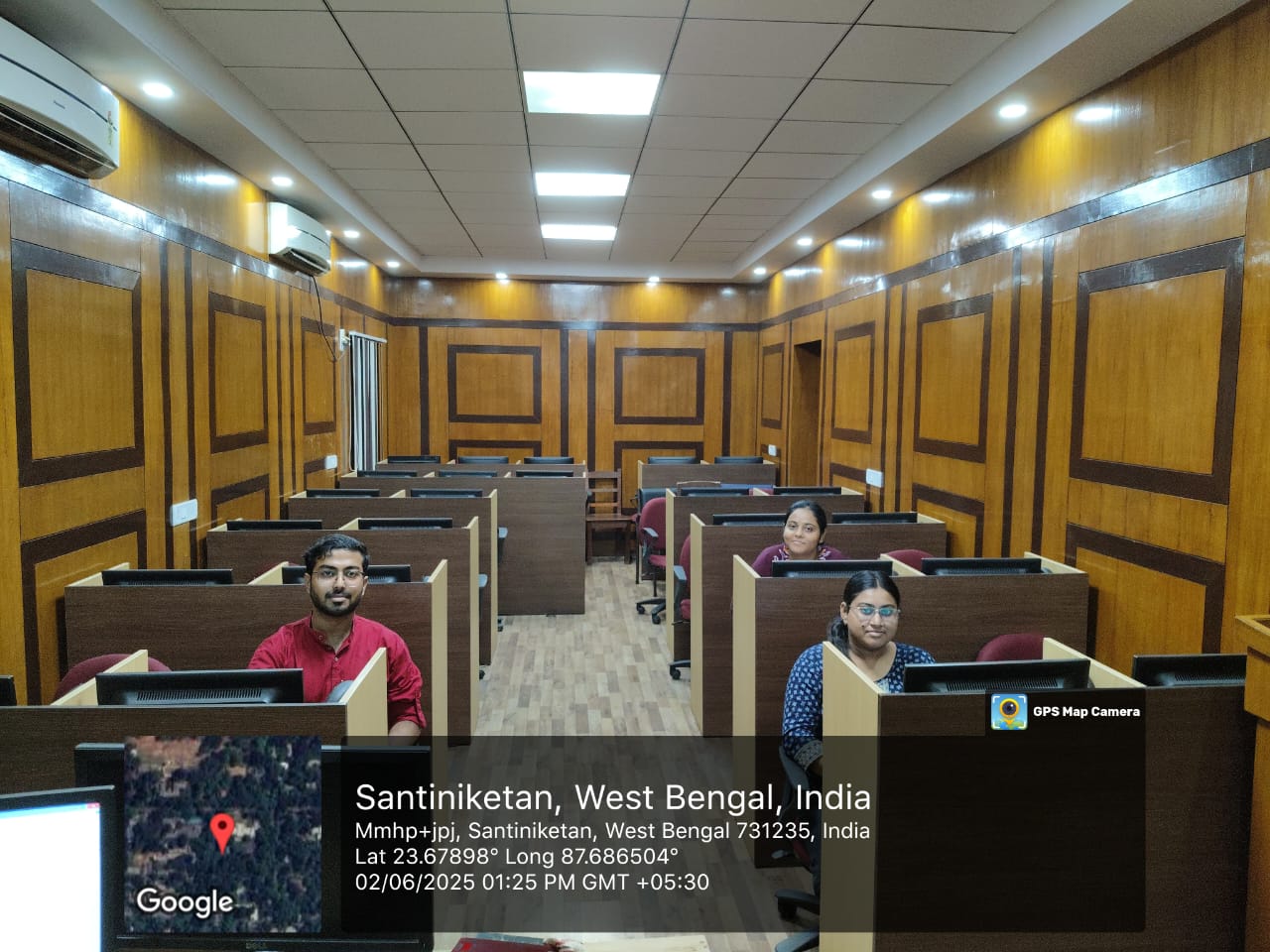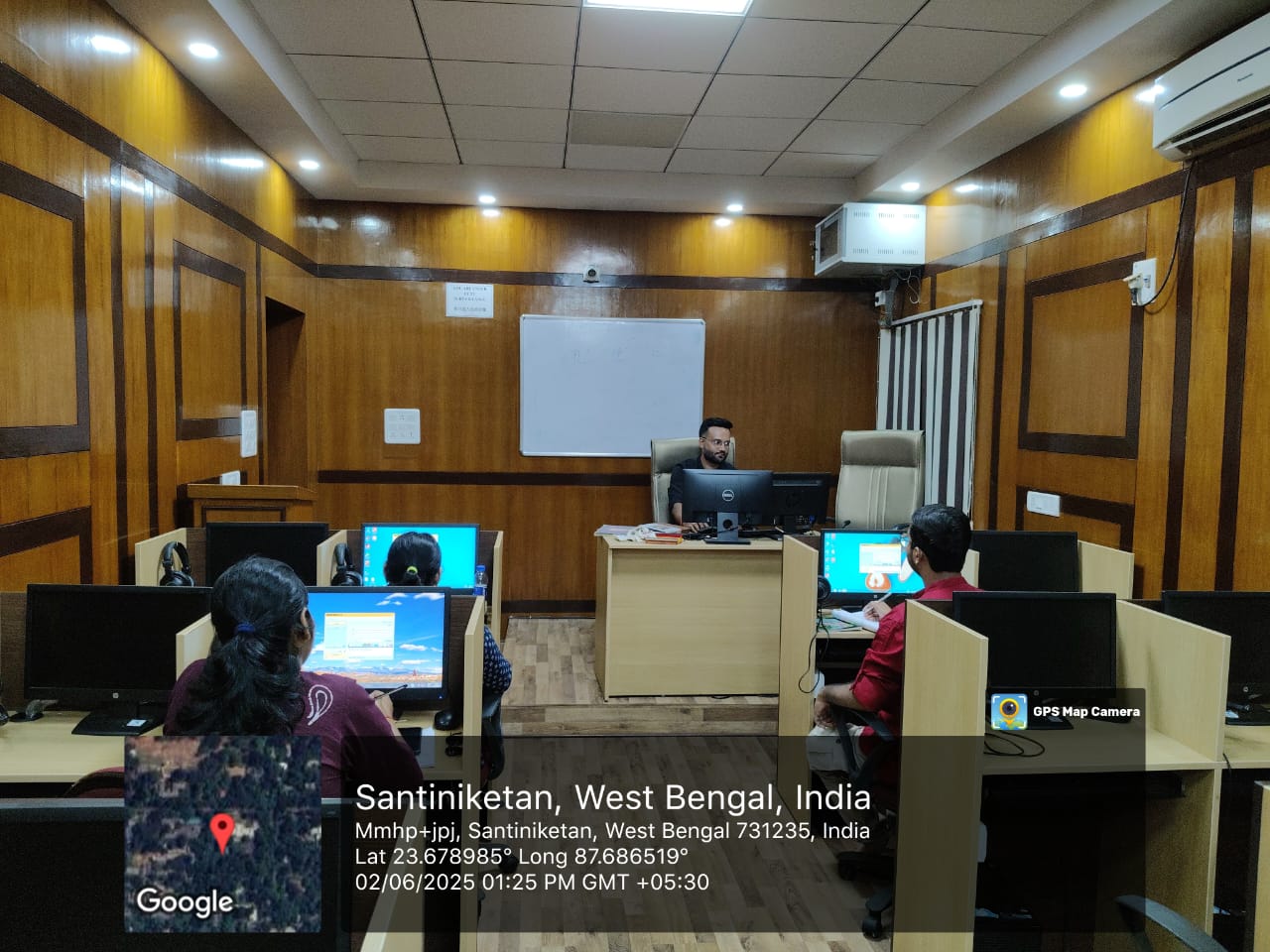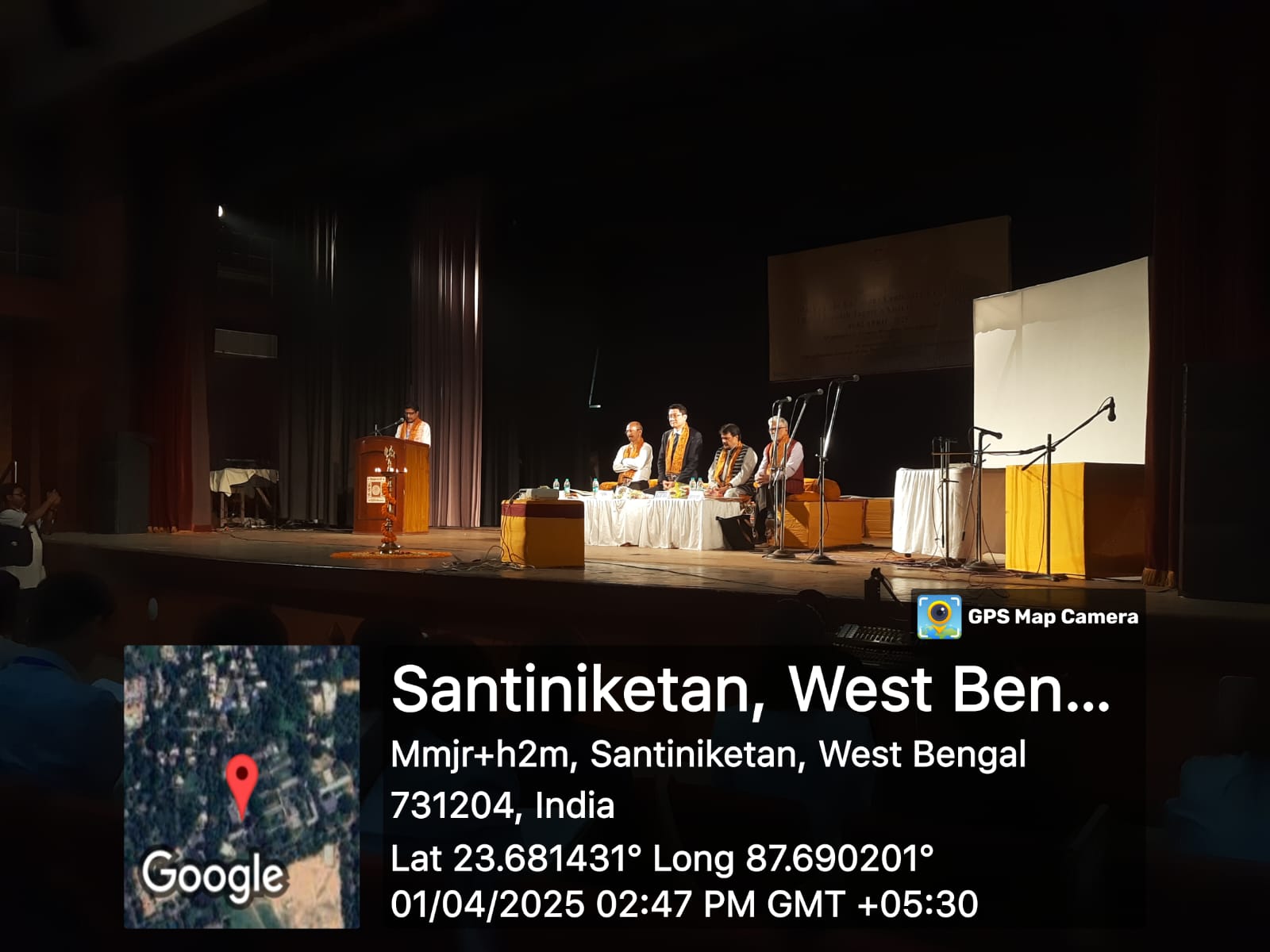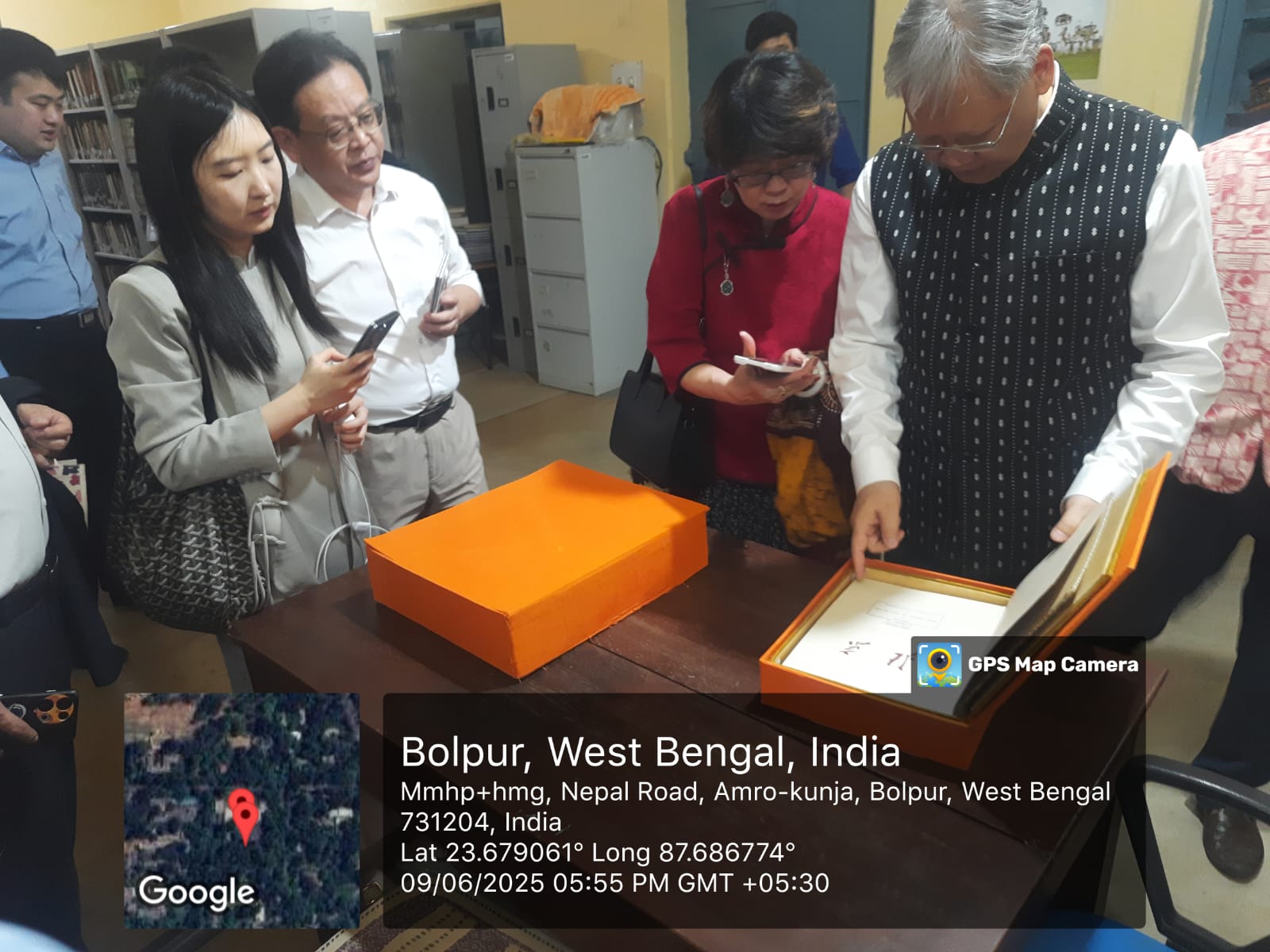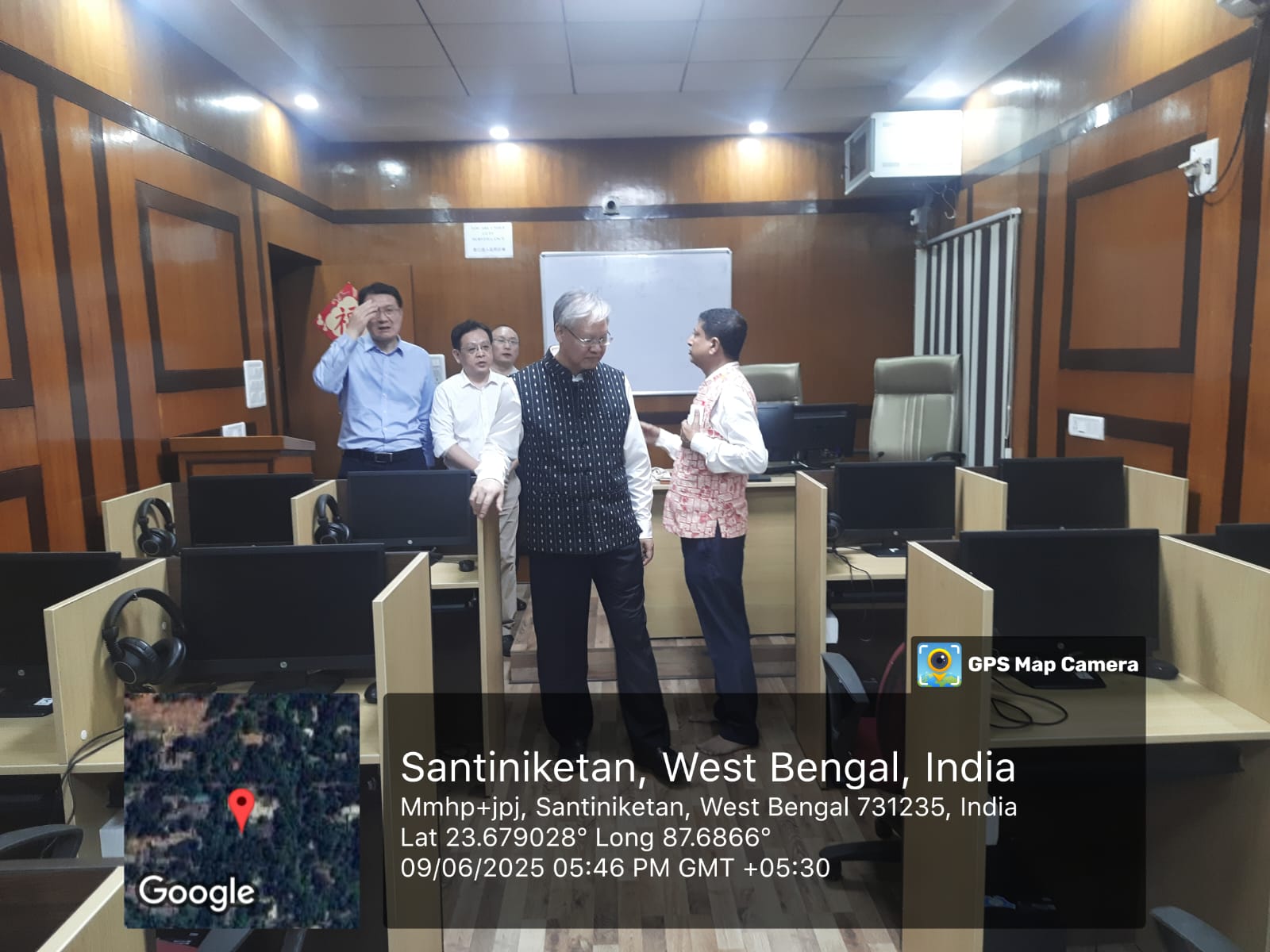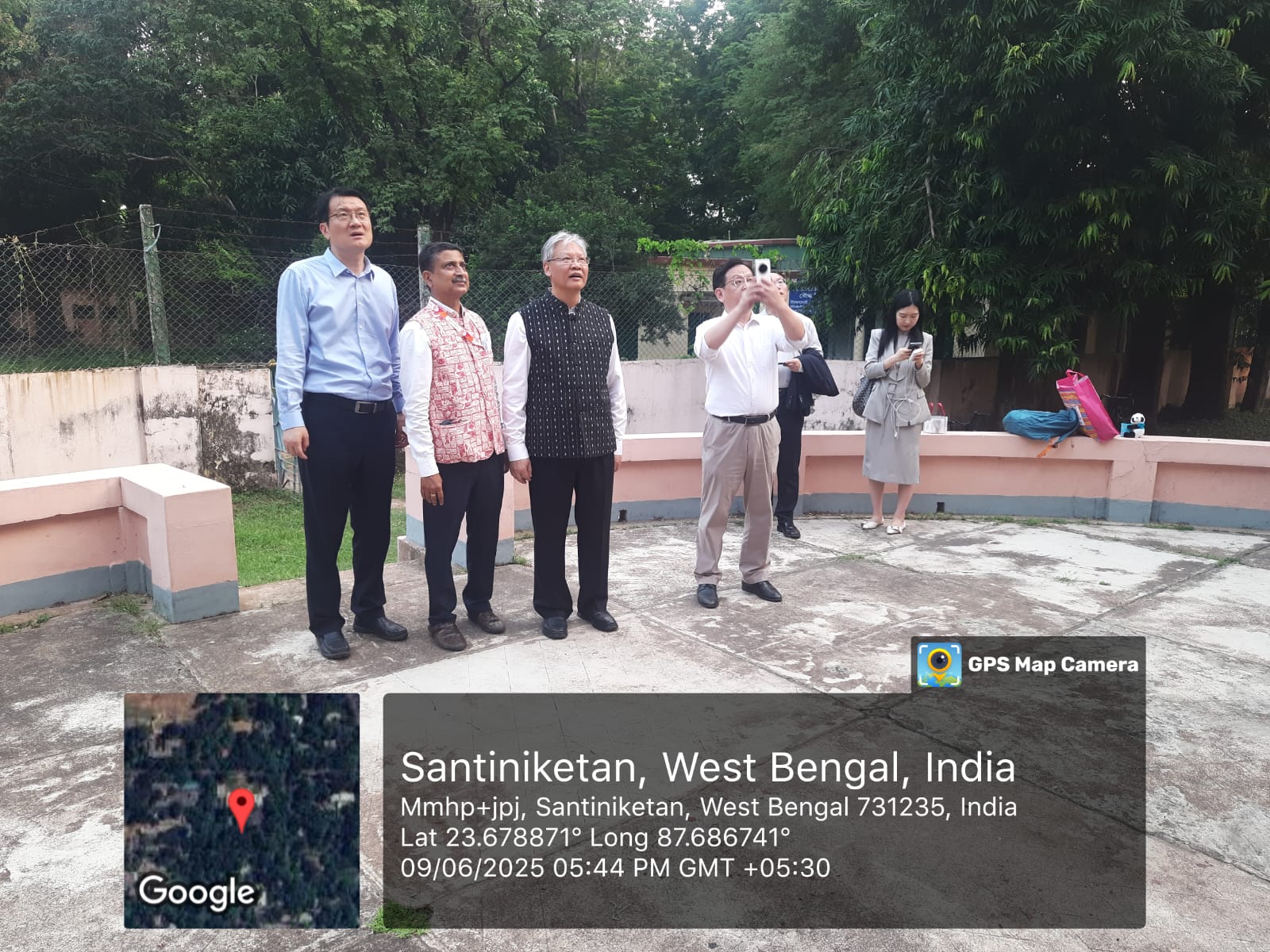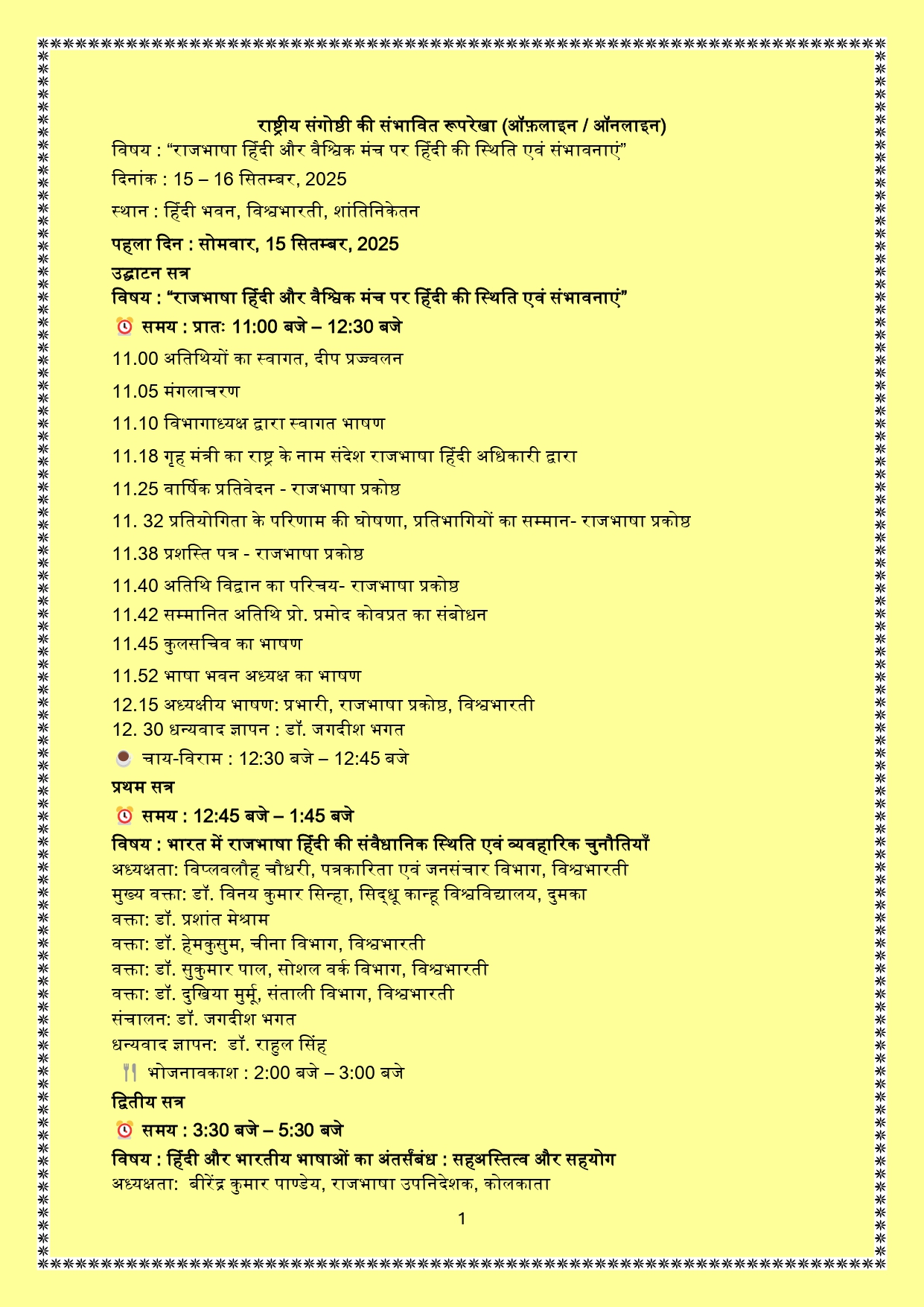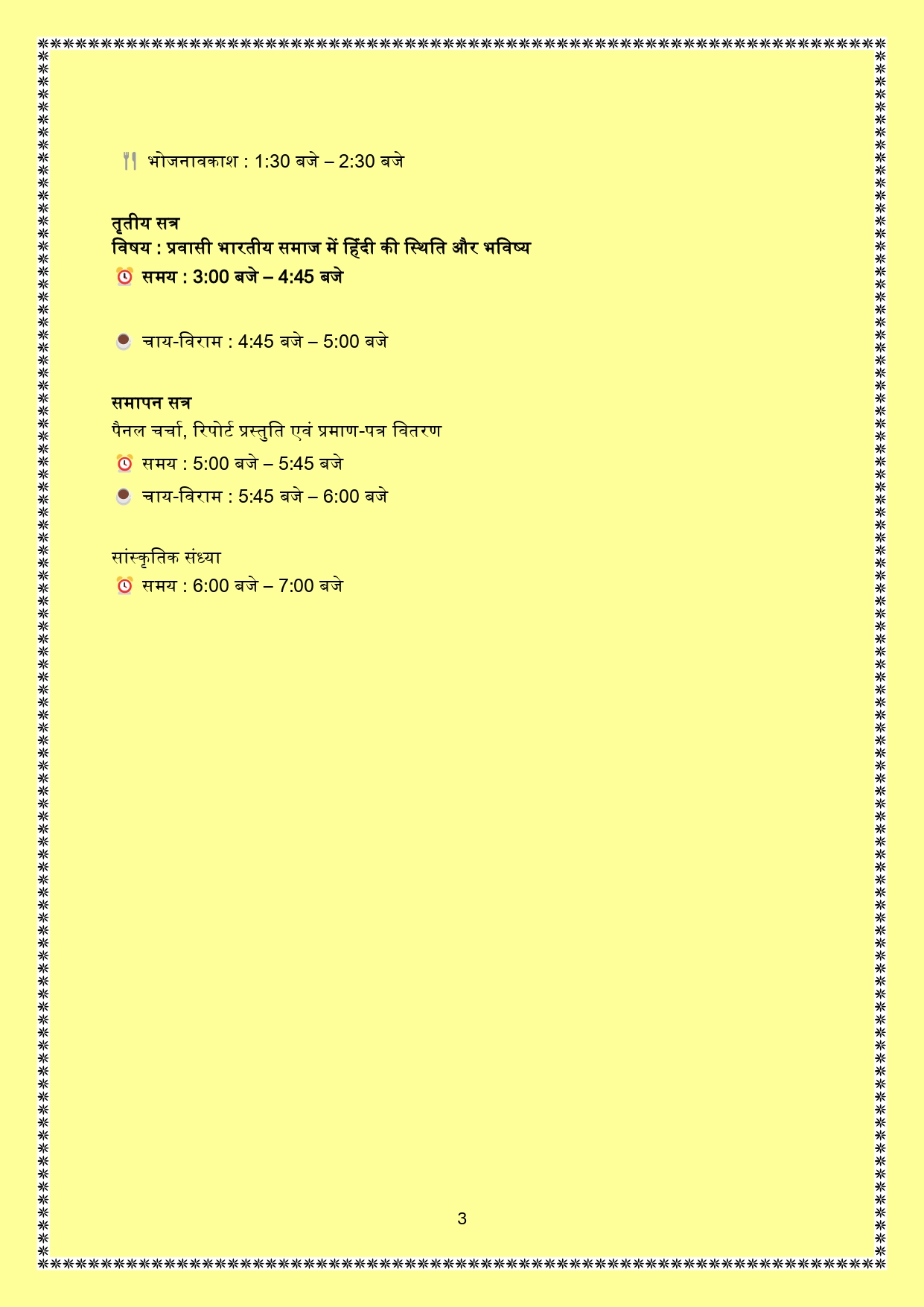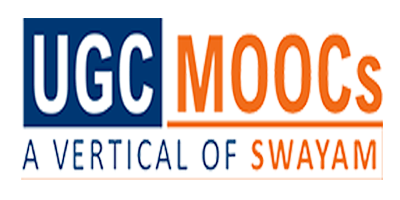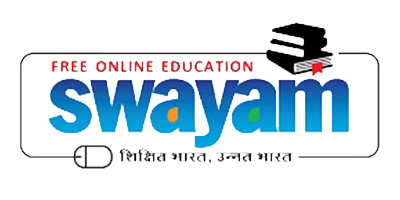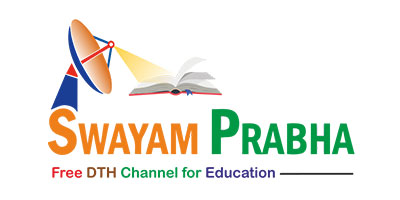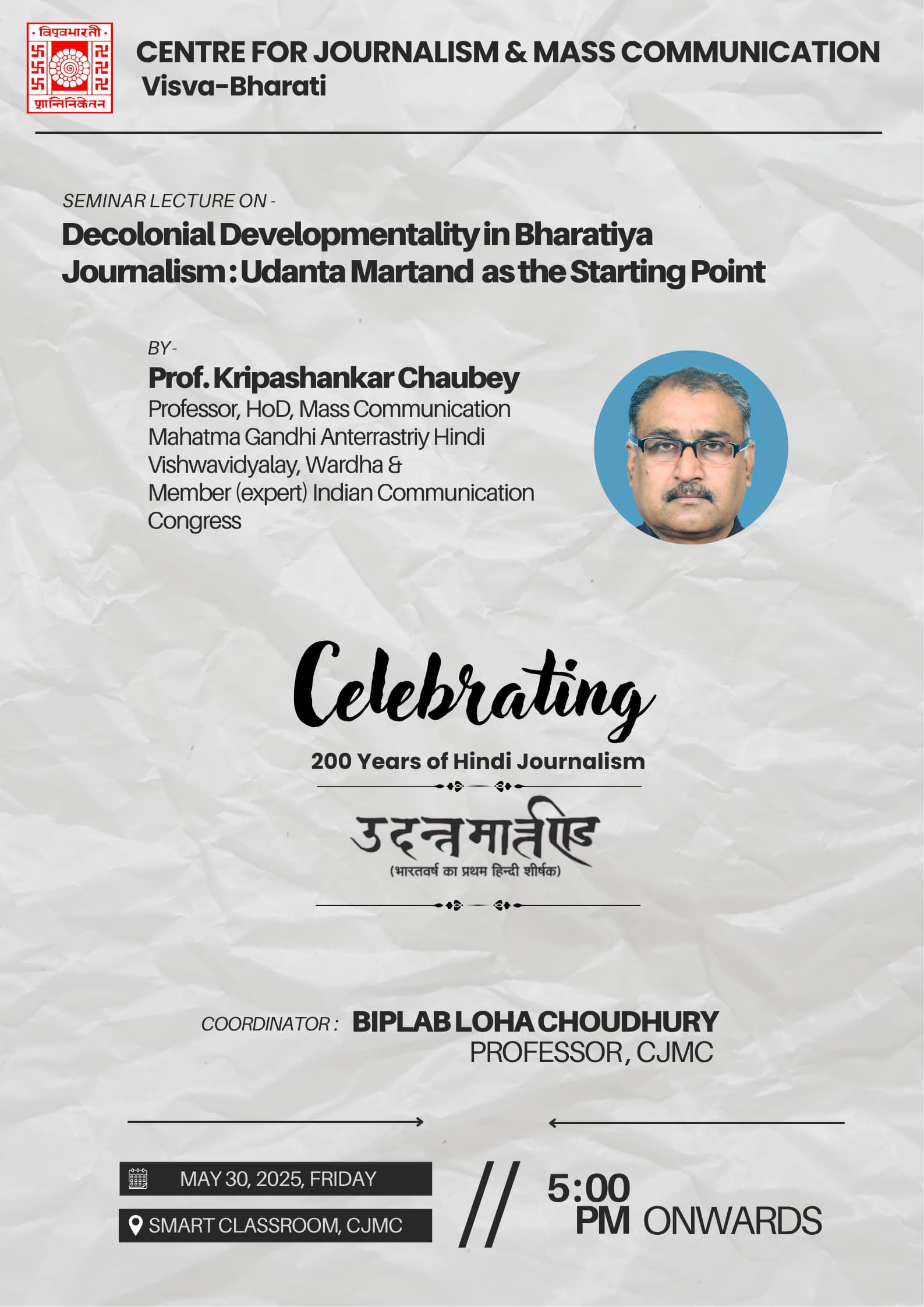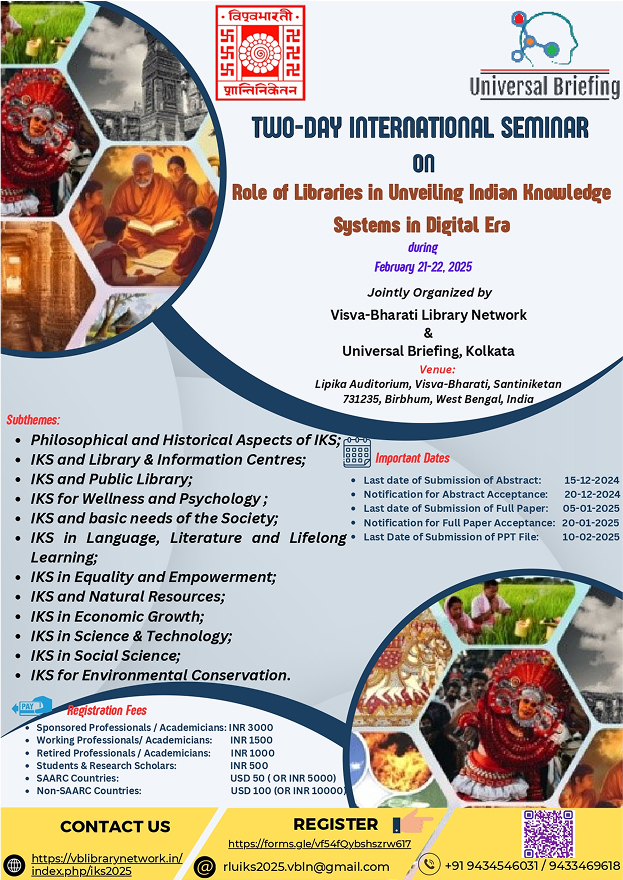
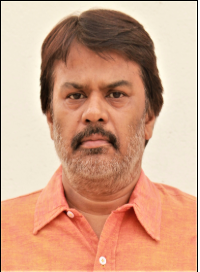
Principal

Vice Principal

Vice Principal
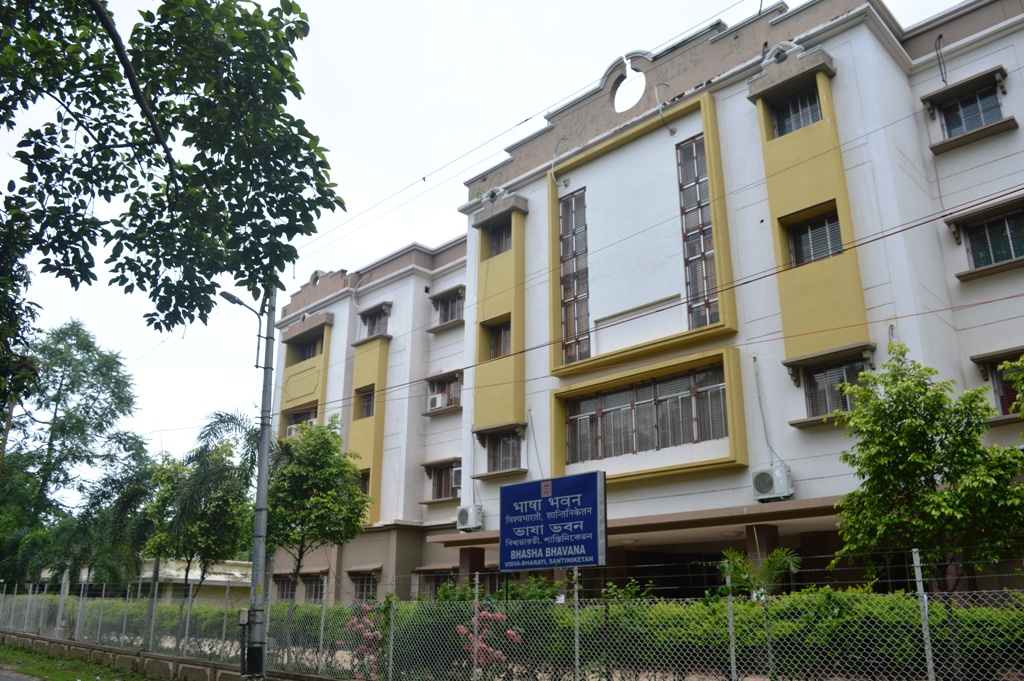

- Carca: Exercise in Comparatism
- Screening Japanese Film
- Minor, Multidisciplinary & MIL Courses classes begin from 16th September 2025
- List of Minor, Multi and MIL Courses
- Dept. of Indo-Tibetan Studies - Ph.D. Viva-voce Examination of Shri Lobzang Samdup on 16/09/2025
- ALLOTMENT OF HOSTEL FOR BHASHA BHAVANA (UG BOYS & GIRLS) PHASE I
- Department of Bengali - Final Ph.D. Viva-Voce examination of Riya Pal on 03/09/2025
- Drama Club Bhasha Bhavana -The Launching of Students` Production Series on 29/08/2025
- Department of Indo Tibetan Studies - Ph.D. Pre-Submission of Narender Bodh and Chandrajit Roy on 28/08/2025
- Department of Japanese - Online registration for the SEC course "Creative Writing" (MOOCs) for UG 3rd Semester students
- Bhasha Bhavana - Notice- Commencement of UG Sem-I classes for the year 2025 for different Depts/centres under Bhasha-Bhavana from 01/09/2025
- Department of Bengali - NOTICE - Regarding online registration for the AECC MIL Bengali course (MOOCs) for UG Sem-III students
- Bhasha Bhavana - Corrigendum- Regarding the list of Multi-disciplinary Courses offered by Bhasha-Bhavana under NEP
- Bhasha Bhavana - Corrigendum- Regarding the list of Multi-disciplinary Courses offered by Bhasha-Bhavana under NEP
- Dept. of Sanskrit, Pali & Prakrit - Open Ph.D. viva-voce exam of Ms. Basira Parvin on 27/08/2025
- Celebrating Shakespeare Day
Bhasha Bhavana
About The Bhavana
A remarkable repository of manuscripts in Sanskrit, Bengali, Odia, Tibetan, Arabic, and Persian is meticulously preserved within the departments of Bhasha-Bhavana. Esteemed scholars and visiting professors from across the globe are drawn to the institute, fostering a vibrant environment of intellectual exchange that opens new avenues of research and drives significant scholarly contributions. Bhasha-Bhavana (Institute of Languages, Literature & Culture) stands as a beacon of Tagore’s visionary ideals, championing national unity and harmony through the transformative power of knowledge. It embodies the essential values of self-sacrifice and universal brotherhood, inspiring generations to cultivate a spirit of collaboration and understanding.
Photos
Academic Calendar
Achievements
Alumni Association
Seminar, Conference & Workshop
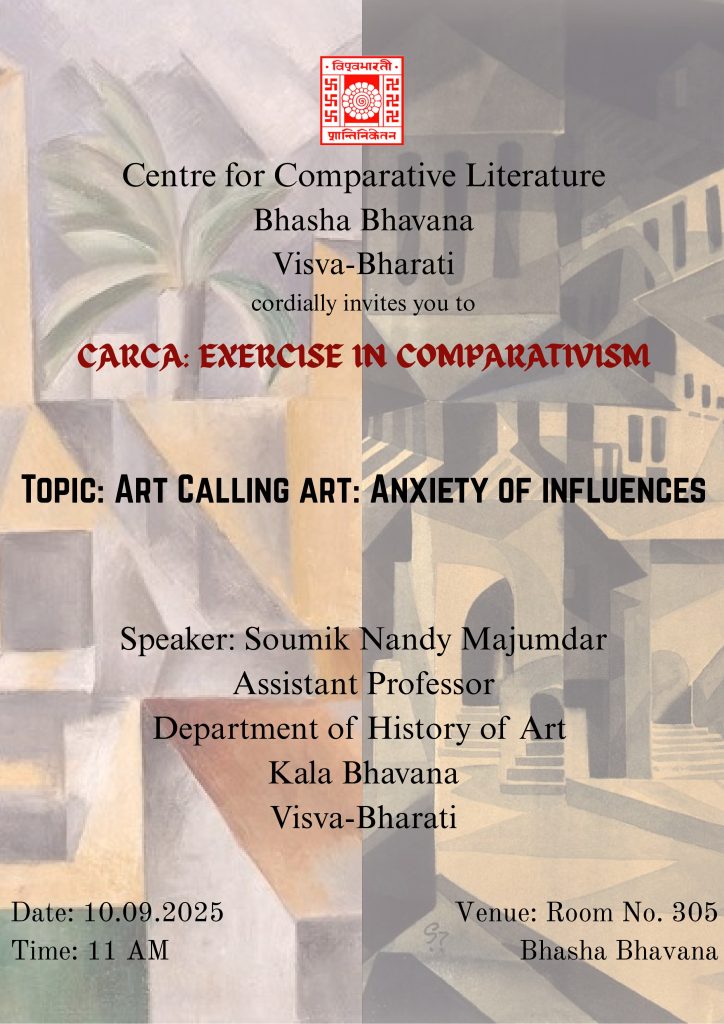
Carca: Exercise in Comparativism
This lecture delves into the intricate tendency of visual art to draw upon preceding works, as evidenced by countless examples across global art history. Terms such as influence, appropriation, and adaptation only partially capture the complexity of this phenomenon at the levels of creation and conceptualization. Through select significant case studies, the presentation will explore how artists navigate this ‘anxious passage,’ negotiating the interplay of style, manner, and method to create works that both honor and transcend their artistic predecessors.
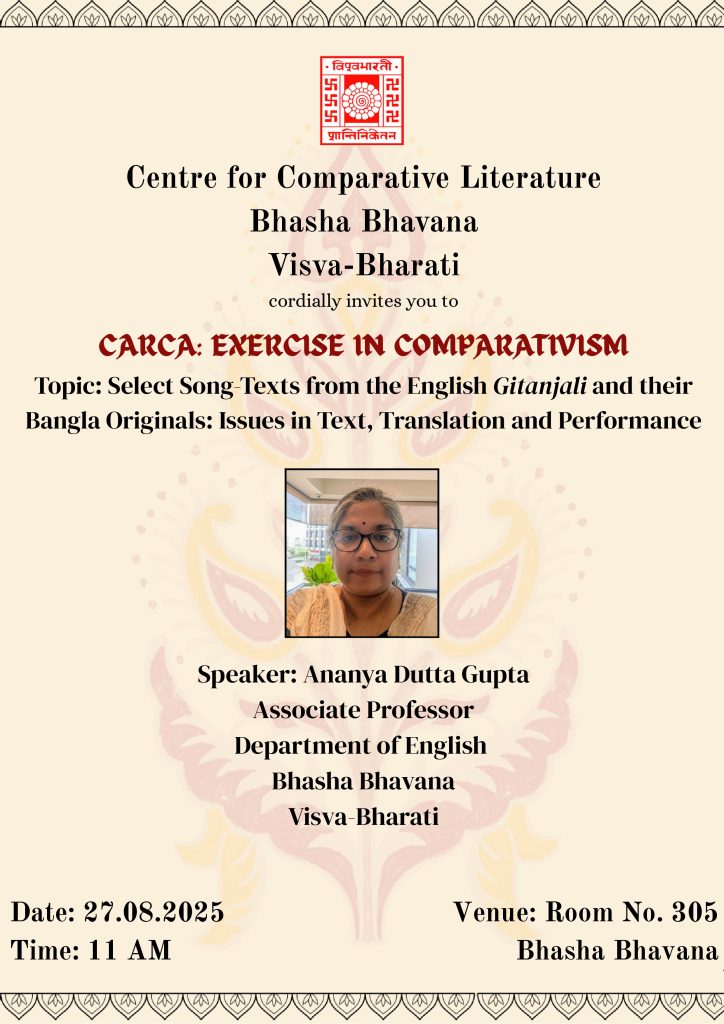
Carca: Exercise in Comparativism
Gitanjali is a unique text because of the multi-genericity projected by its title and subtitle in the Macmillan edition, namely, Song offerings which are also prose-poems. The intimacy, if not indistinguishability, of the song and the poem in Indian poetics is of course provenanced by Natyashastra. So, the English Gitanjali is already an inter-media translation, and not just an interlingual one. It entails a transcreation from rhymed verse and often rhymed, structured song, to poetic or lyric prose with its own looser musicality. It is interesting to explore whether the rhapsodic, i.e. performative quotient was a priority with either Tagore or his editor-collaborator Yeats in the project that Gitanjali became. One would imagine so, in view of the particular strengths of the book highlighted by Yeats in his Introduction. The distinction made by Yeats between glossy coffee table books and the anthem-like liquidity of Gitanjali helps us understand where exactly Tagore’s poem-songs struck him as having the promise of the classic. The people’s classic, then, is not one that remains decorative or awe-inspiring in a distancing way, but one that is embraced by the body of the people across generations, by the voice, and the soul of people at large, not of an elite few. This formal liminality is pivotal to Yeats’s argument. The question one is inclined to ask is whether Gitanjali as a people’s classic is a project duly accomplished in its own time and the decades following, or a yet unfinished project presenting newer challenges in our time. This question acquires relevance in view of the continued debates over the cultural ownership of Tagore, especially his songs today. The proposed presentation will juxtapose various translations and renditions of select song numbers that find place in the English Gitanjali to substantiate the above contention.
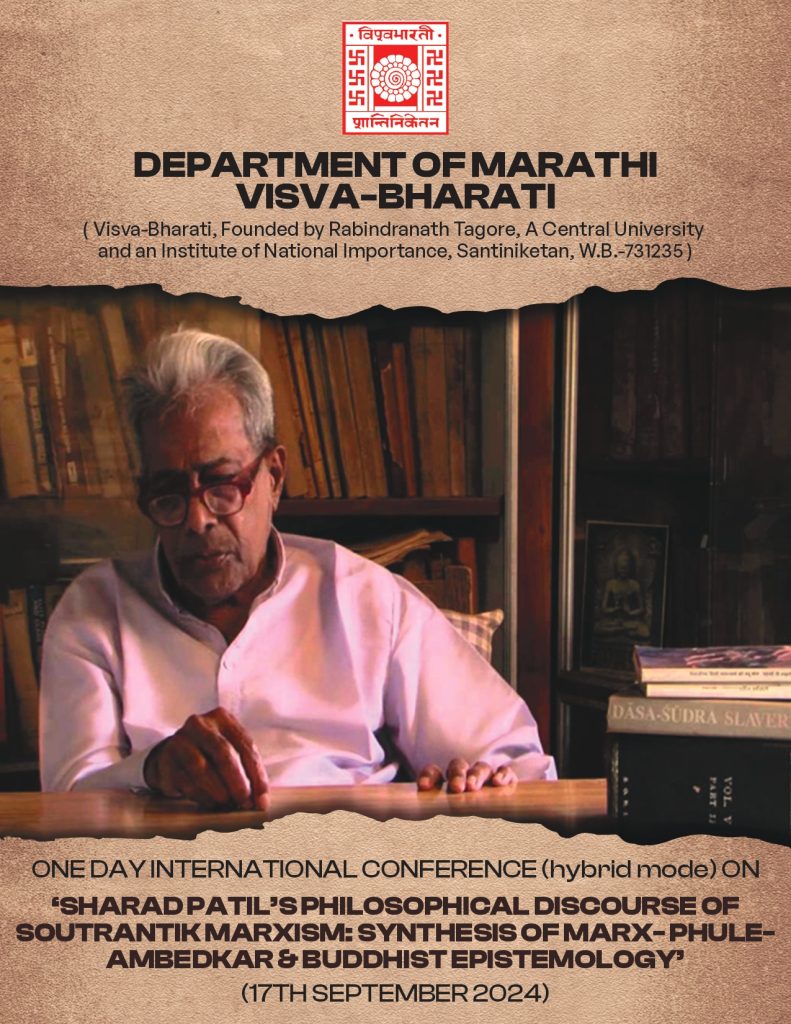
Conference on Sharad Patil
The Philosopher, Historian and Ideologist Sharad Patil is one of the milestone names in Marathi literature. He joined the Communist Party of India (Marxist) in the year 1964 following the CPI-split. He always fought for the Dalits, Tribals, and other backward classes and peasants. He strongly advocated the need for casteless society and developed his ideological thesis on ‘Marxism-Phule-Ambedkarism’ (MaFuA). Sharad Patil wanted to build a Shudra philosophical worldview that borrows from multiple indigenous intellectual traditions, from Buddha to Phule. He has presented an intellectual history of India that has largely been ignored by modern academic writings. He has founded Satyashodhak Marxvadi Marathi Magazine and Dalit Aadivasi Gramin Sahitya Sabha in the rural backward areas of Maharashtra. His research on the caste system since ancient times have led him to produce four volumes on Das Shudra Slavery and Indian Feudalism and the earliest human civilisation which was dominated by not only matriarchy but gynocracy. Patil’s latest published fourth volume on Primitive Communism, Matriarchy-Gynocracy and Modern Socialism will go down in history of the vast treasures of Marxism as a milestone for the future researchers. His deep studies of great ancient grammarians along with ancient languagesis a revelation indeed. He spent over 20 years in studying Sanskrit, Pali, Magadhi with irrefutable evidence providing solid theoretical ideological foundation to smash the offensive of the right reactionary forces. His signal contribution is that he had dwelt deeply into Buddha’s theory of dependent origination and its highly advanced Buddhist logic. The Srautrantik Marxism guarantees total socialist revolution and thereafter ideological transformation in socialist reconstruction. He has made a great contribution on Ideology after K.P.Jaiswal, D. D. Kosambi and Deviprasad Chattopadhaya. Some of his revolutionary oeuvre in Marathi literature which are translated in English also includes: Who are the Real Enemies of Shivaji’s Hindavi Swarajya, Caste-Feudal Servitude, Caste-ending Bourgeoisie, Towards an A-Brahmanical Aesthetics. His manifesto of the A-Brahmani Sahitya and Kala Mahasabha published in 1987. He has also explored the Logical Dialectics and Multi-Linear A-Brahmin Methodology. The revolutionary works of Sharad Patil are totally written in Marathi language. Sharad Patil has challenged the traditional hierarchical system of Marathi literature through his writings. He worked as a lifelong activist who never deviated from his commitment towards annihilation of caste.
Courses Offered

Academic Calendar
Achievements
Alumni Association
Upcoming Seminar

Seminar 1 of 2025
Lorem ipsum dolor sit amet, consectetur adipiscing elit. Nunc vulputate libero et velit interdum, ac aliquet odio mattis. Class aptent taciti sociosqu ad litora torquent per conubia nostra, per inceptos himenaeos. Corem ipsum dolor sit amet, consectetur adipiscing elit.Corem ipsum dolor sit amet, consectetur adipiscing elit. Nunc vulputate libero et velit interdum, ac aliquet odio mattis. Class aptent taciti sociosqu ad litora torquent per conubia nostra, per inceptos himenaeos. Corem ipsum dolor sit amet, consectetur adipiscing elit. Nunc vulputate libero et velit interdum, ac aliquet odio mattis. Class aptent taciti sociosqu ad litora torquent per conubia nostra, per inceptos himenaeos.

Seminar 2 of 2025
Nunc vulputate libero et velit interdum, ac aliquet odio mattis. Class aptent taciti sociosqu ad litora torquent per conubia nostra, per inceptos himenaeos.
Lorem ipsum dolor sit amet, consectetur adipiscing elit. Nunc vulputate libero et velit interdum, ac aliquet odio mattis. Class aptent taciti sociosqu ad litora torquent per conubia nostra, per inceptos himenaeos. Corem ipsum dolor sit amet, consectetur adipiscing elit.

Seminar 3 of 2025
Lorem ipsum dolor sit amet, consectetur adipiscing elit. Nunc vulputate libero et velit interdum, ac aliquet odio mattis. Class aptent taciti sociosqu ad litora torquent per conubia nostra, per inceptos himenaeos. Corem ipsum dolor sit amet, consectetur adipiscing elit. Lorem ipsum dolor sit amet, consectetur adipiscing elit. Nunc vulputate libero et velit interdum, ac aliquet odio mattis. Class aptent taciti sociosqu ad litora torquent per conubia nostra, per inceptos himenaeos. Corem ipsum dolor sit amet, consectetur adipiscing elit.

Seminar 4 of 2025
Lorem ipsum dolor sit amet, consectetur adipiscing elit. Nunc vulputate libero et velit interdum, ac aliquet odio mattis. Class aptent taciti sociosqu ad litora torquent per conubia nostra, per inceptos himenaeos. Corem ipsum dolor sit amet, consectetur adipiscing elit.
Lorem ipsum dolor sit amet, consectetur adipiscing elit. Nunc vulputate libero et velit interdum, ac aliquet odio mattis. Class aptent taciti sociosqu ad litora torquent per conubia nostra, per inceptos himenaeos. Corem ipsum dolor sit amet, consectetur adipiscing elit.
Courses Offered


© Copyrights 2025 VISVA-BHARATI All Rights Reserved.
